You’ve invested in smart home devices, but they’re only as reliable as your WiFi network. When your smart lights flicker offline during dinner parties or your security cameras buffer at vital moments, the problem isn’t your devices—it’s your wireless foundation. Your home automation dreams can quickly turn into frustrating nightmares without the right network essentials in place. These five essential WiFi components will determine whether your smart home thrives or barely survives.
Robust Network Infrastructure and Coverage Throughout Your Home
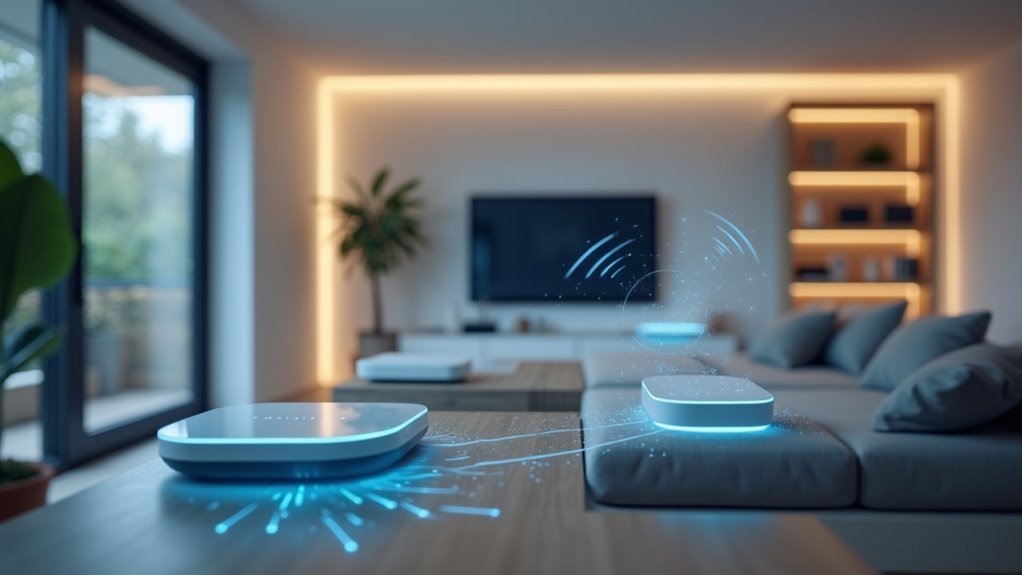
While smart home devices promise unprecedented convenience, they’re only as reliable as the network infrastructure supporting them. Your robust network infrastructure forms the backbone of successful smart home automation, with modern routers supporting up to 250 connected devices simultaneously.
Your smart home’s reliability depends entirely on the strength of your underlying network infrastructure and connectivity backbone.
You’ll want to upgrade to Cat6 cabling over Cat5e for enhanced data transmission speeds and future-proofing your Internet of Things ecosystem.
Strategic placement of multiple access points eliminates dead zones and guarantees consistent Wi-Fi coverage throughout your home. When positioning these access points, consider physical obstructions and interference from neighboring networks that can degrade performance.
Don’t overlook regular firmware updates for your routers – they’re essential for maintaining peak performance and security, protecting your smart home network from vulnerabilities that could compromise reliability.
Sufficient Bandwidth to Support Multiple Connected Devices
Even with perfect coverage throughout your home, insufficient bandwidth will cripple your smart home’s performance and leave you frustrated with laggy responses and dropped connections. Your internet connection needs sufficient bandwidth to handle multiple connected devices simultaneously for peak performance.
| Device Type | Bandwidth Required |
|---|---|
| Basic smart home devices | 1-5 Mbps each |
| High-definition video streaming cameras | Up to 10 Mbps each |
| Household with 10 devices | Minimum 50 Mbps total |
| Recommended baseline | 25 Mbps minimum |
| Multiple HD cameras | 100+ Mbps recommended |
Smart home devices compete for bandwidth, so upgrading your internet plan guarantees network efficiency. Modern Wi-Fi standards like Wi-Fi 6 improve bandwidth management, preventing lag when streaming or monitoring multiple devices concurrently.
Low Latency and Minimal Packet Loss for Real-Time Control
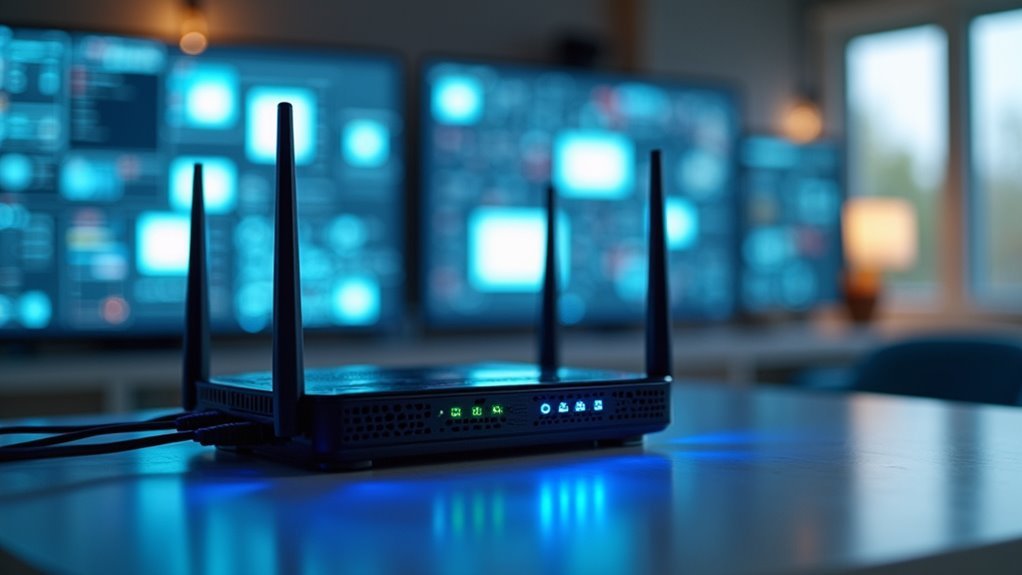
When you tap your smartphone to turn off the lights or open your front door, you expect an immediate response—and that’s where low latency becomes vital for your smart home’s performance.
Your network needs to deliver commands in under 50 milliseconds for effective real-time control of smart devices like security cameras and lighting systems.
Packet loss below 1% is essential for maintaining seamless connectivity between your IoT devices. Higher rates cause delayed responses and disrupt automated tasks, considerably degrading your user experience.
Even small increases in packet retransmission can impact your network’s overall performance.
You’ll need robust Wi-Fi infrastructure with quality routers and strategically placed access points to achieve ideal coverage and minimize these issues throughout your home.
Strong Security Protocols to Protect Your Smart Home Network
As your smart home grows with more connected devices, implementing WPA3 security protocol becomes your first line of defense against cyber threats and unauthorized network access.
Strong security protocols require regular router firmware updates to patch vulnerabilities and strengthen your Wi-Fi security foundation.
Regular firmware updates serve as essential security patches that close vulnerabilities and fortify your home network’s defensive barriers.
Create a separate guest network for smart devices to isolate them from your main network where sensitive data lives. This strategy minimizes breach risks from less secure IoT devices.
Enable network encryption and establish unique passwords for each connected device to prevent unauthorized access to your automation systems.
Don’t forget monitoring connected devices regularly for suspicious activity. Early detection of unusual behavior helps you identify potential security breaches quickly, allowing timely intervention to safeguard your smart home network’s integrity and protect your personal information.
Reliable Connectivity for Voice-Activated and IoT Device Integration
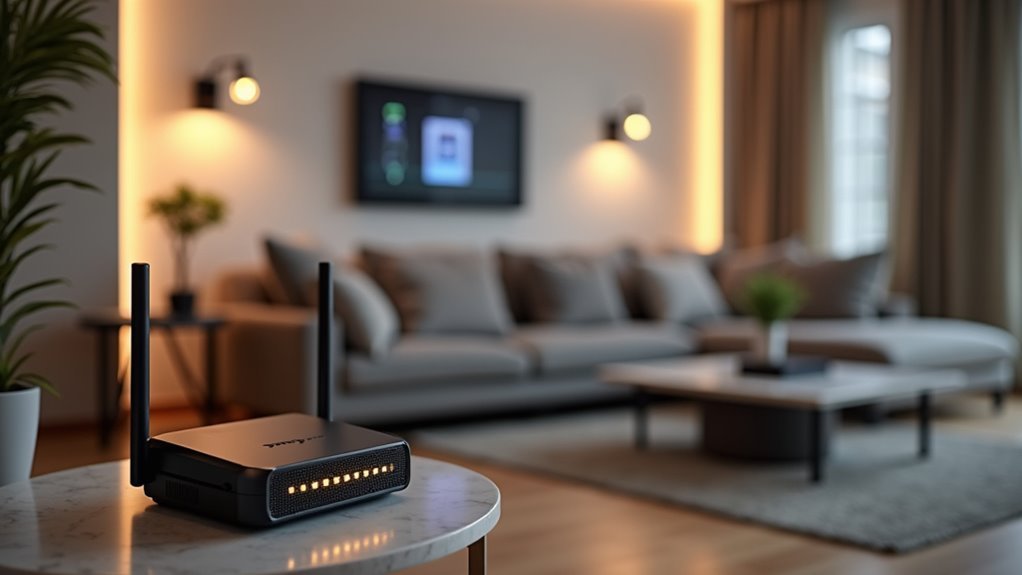
Since voice-activated assistants and IoT devices depend on constant communication with your network, establishing reliable connectivity becomes essential for seamless smart home operation.
You’ll need a robust internet service provider that delivers consistent high-speed performance to support real-time voice commands and device responses.
Smart home devices mainly use the 2.4 GHz band, which can become congested quickly. Your network configuration should include strategic access point placement to eliminate dead zones and guarantee thorough coverage throughout your home.
Modern routers can handle multiple connections simultaneously, supporting up to 250 devices depending on specifications.
To optimize voice-activated and IoT devices performance, configure your network with multiple access points that provide overlapping coverage, ensuring your devices maintain strong signals regardless of their location within your home.
Frequently Asked Questions
What Is the #1 Product That Users Wish to Control With Home Automation?
You’ll find that smart lighting systems are the #1 product users want to control with home automation. They’re incredibly popular because you can customize settings, save energy, and control them remotely for convenience.
What Are the Wireless Standards for Home Automation?
You’ll encounter three main wireless standards for home automation: Wi-Fi (802.11ac/ax) for high-bandwidth devices, Zigbee for low-power mesh networks, and Z-Wave for reliable sub-GHz communication with minimal interference.
Is Home Automation Profitable?
You’ll find home automation highly profitable, boosting property values by 5%, cutting energy bills 20%, reducing insurance premiums 10-20%, and creating lucrative business opportunities in a market reaching $100 billion by 2025.
Which Technology Is Best for Home Automation?
You’ll find Wi-Fi works best for most home automation setups, but consider Zigbee or Z-Wave for larger homes needing mesh networking, or powerline communication where Wi-Fi signals can’t reach effectively.

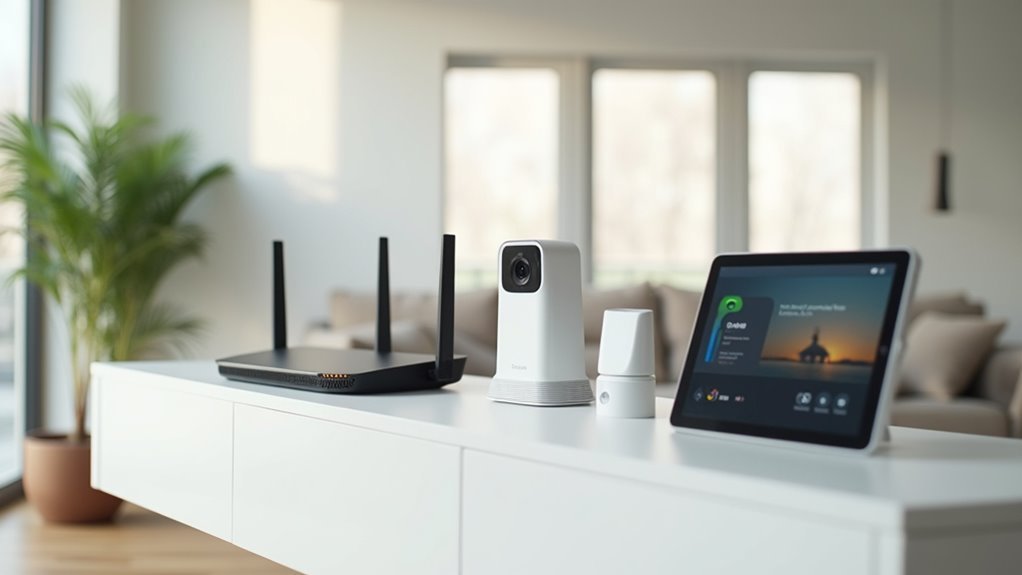

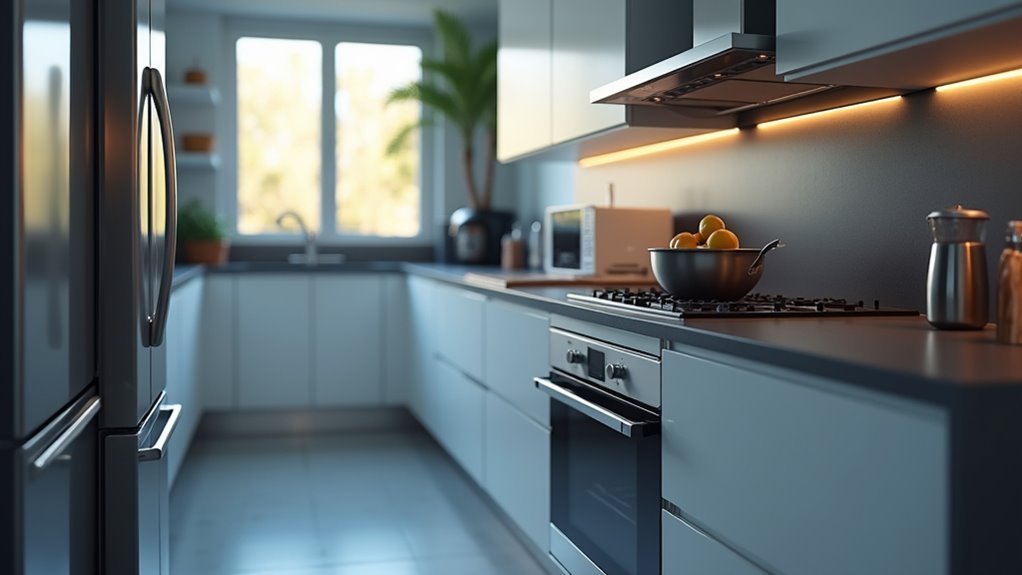

Leave a Reply